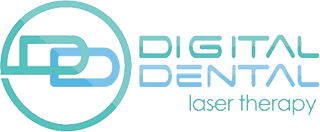Tufts University School of Dental Medicine
presents
Drs Mayoor Patel and Terry Bennett
Sydney
Friday 4 Aug – Sunday 6 Aug
- 8:00 AM – 5:00 PM (All Days)
- Location: Rydges Sydney Central 28 Albion Street, Surry Hills NSW 2010
EARLY-BIRD DISCOUNT FOR ALL DENTISTS!
Register before June 15th to receive a 20% discount!Local Australia Contact: Karen McCloy; karenmccloy62@gmail.com
Learning outcomes
- Basic understanding of the physiology of sleep, breathing, sleep-related movement disorders, upper airway resistance syndrome, adult and pediatric obstructive sleep apnea (OSA).
- Review of health consequences of sleep deficiency.
- Understanding the anatomy as it relates to the upper airway to understand the anatomic model of airway obstructions better.
- Review the common orofacial pain disorders (internal derangements, muscle disorders, neuropathic, neurovascular) and the criteria to diagnose such conditions.
- Review patient intake forms and conduct a comprehensive interview to gather clues to help with a differential diagnosis.
- Hands-on examination, taking sleep appliance and TMJ appliance bite registration.
- Review of oral appliances for the management of OSA and which appliance is appropriate for each case.
- Review normal and pathological images of Panorex, CBCT, and MRIs of the TMJ and upper airway. Indication and contraindications of injections for orofacial pain.
- Fabricating temporary appliances for TMD and Sleep.
Program instructors
Course details
About 1 billion people between 30 and 69 have obstructive sleep apnea (OSA). The prevalence of OSA continues to rise and affect all countries, especially as an increase in obesity, a major risk factor for sleep apnea, drives it.
Craniofacial pain appears to occur in about 10% of the adult population, with women affected twice more as men. And it is one of the most common causes of chronic pain after back, neck, and knee pain. Yet, while acute pain in the craniofacial area is often tooth-related, chronic craniofacial pain is most commonly related to musculoskeletal disorders such as temporomandibular joint disorders (TMDs).
Any way you look at it, OSA and craniofacial pain are interrupting the lives of individuals across the globe. Knowing the prevalence of these conditions signals a growing need to provide relief for patients with these conditions, and dentists are in a unique position to do so.
Dentists play a key role in screening and managing TMJ disorders. They are also vital for managing the impact of TMD on obstructive sleep apnea. Why? Because these are common conditions that can significantly impact a patient’s quality of life. By treating TMD, dentists can help patients find relief from pain and discomfort in their jaw and face, as well as headaches and difficulty eating and speaking.

